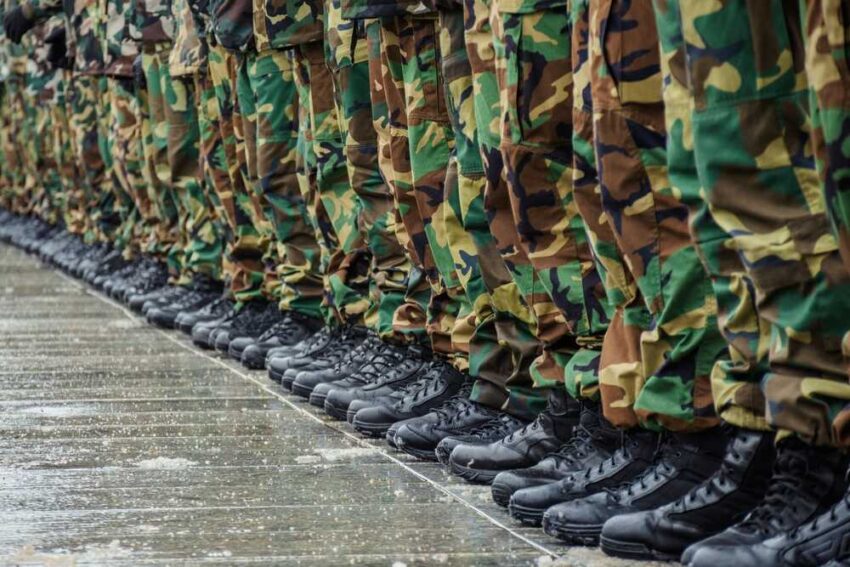(LibertySociety.com) – In a groundbreaking security overhaul, the U.S. Marine Corps has deployed Immigration and Customs Enforcement (ICE) agents at three major bases after Chinese nationals made over 100 infiltration attempts at American military installations.
Key Takeaways
- The Marine Corps has stationed ICE agents at Camp Pendleton, Quantico, and Hawaii bases to enhance security against foreign infiltration attempts
- This initiative follows alarming security breaches, including a 2023 incident where two Jordanian nationals attempted to breach Quantico
- The Wall Street Journal reported approximately 100 Chinese nationals have attempted to infiltrate U.S. military bases
- Critics question why Marines need ICE assistance, suggesting potential inadequacies in the Corps’ security protocols
- If successful, the program may expand to additional military installations across America
Marines Call In ICE After Foreign Infiltration Attempts
The U.S. Marine Corps has launched an unprecedented security partnership with Immigration and Customs Enforcement (ICE) at three major installations following multiple foreign infiltration attempts. The pilot program stations ICE agents at entry gates of Camp Pendleton in California, Marine Corps Base Quantico in Virginia, and Marine Corps Base Hawaii. This interagency collaboration aims to strengthen perimeter security through improved identity verification and enhanced threat detection capabilities at these critical military facilities.
The initiative comes in response to alarming security breaches that have exposed vulnerabilities at American military installations. In May 2023, two Jordanian nationals attempted to breach Quantico – one illegally present in the United States and the other with an expired visa. Additionally, unauthorized drone flights over military bases have increased, raising serious concerns about surveillance and intelligence gathering by foreign entities targeting sensitive defense infrastructure.
Chinese Infiltration Attempts Trigger Security Overhaul
Perhaps most concerning is The Wall Street Journal’s report that approximately 100 Chinese nationals have attempted to infiltrate U.S. military bases in recent years. This systematic pattern of infiltration attempts by foreign nationals, particularly from China, represents a significant escalation in threats to American military security. The Marine Corps-ICE collaboration directly addresses these escalating threats by leveraging ICE’s expertise in identifying fraudulent documentation and detecting individuals attempting unauthorized entry.
“This collaborative effort will boost threat awareness and force protection by increasing visibility and coordination at critical access points,” stated Marine Corps spokesman Captain Samuel Stephenson. “The program enhances our ability to identify and prevent unauthorized access while maintaining operational security at these strategic installations.” The Marines have emphasized that while most unauthorized access attempts are unintentional navigational errors, a concerning number represent deliberate security risks requiring specialized countermeasures.
Marine Corps officials note that the program may result in longer processing times at entry points but shouldn’t significantly impact daily operations on the bases. The strategic placement of ICE agents at these three diverse locations allows the Corps to evaluate effectiveness across different geographical and operational environments before potentially expanding to additional installations.
Critics Question Need for Outside Security Assistance
The program has drawn criticism from some security analysts who question why the Marine Corps requires external assistance for base security. Professor Abby Hall Blanco from the University of Tampa raised concerns about the implications of bringing in ICE agents. “This move risks implying that the Marine Corps is not handling its own security sufficiently,” noted Blanco, highlighting potential perception issues that could undermine confidence in Marine capabilities.
“When we’re talking about military installations, we’re talking about some of the most secure places in the entire country. So the fact that we need to bring in ICE agents to help secure these places raises some questions,” said Professor Abby Hall Blanco, a defense analyst at the University of Tampa.
The Marine Corps has been notably guarded about releasing historical data on unauthorized access incidents or specific threat origins, fueling transparency concerns. Officials have emphasized that the program represents part of broader enhanced security measures worldwide rather than a response to any single incident. This careful messaging suggests sensitivity about acknowledging potential security gaps while still implementing necessary improvements.
Expanding America’s Military Security Perimeter
If deemed successful, Marine Corps leadership has indicated the program could expand to other installations, particularly those near borders or protecting critical infrastructure. This potential expansion represents a significant shift in military base security protocols, acknowledging the evolving nature of threats facing American defense installations in an era of increased foreign espionage and infiltration attempts.
The collaboration between the Marines and ICE demonstrates a growing recognition that traditional military security measures alone may be insufficient against sophisticated foreign threats. By combining the Marines’ robust physical security with ICE’s specialized expertise in immigration enforcement and document verification, the program creates a more comprehensive security posture that addresses vulnerabilities exploited by foreign actors.
As America faces increasingly complex security challenges from foreign adversaries, this pilot program may represent just the beginning of enhanced interagency cooperation to protect vital military assets. The effectiveness of this approach will be closely monitored as defense officials evaluate whether similar collaborations should become standard practice across all military branches and installations.
Copyright 2025, LibertySociety.com
Click this link for the original source of this article.
Author: Editor
This content is courtesy of, and owned and copyrighted by, https://libertysociety.com and its author. This content is made available by use of the public RSS feed offered by the host site and is used for educational purposes only. If you are the author or represent the host site and would like this content removed now and in the future, please contact USSANews.com using the email address in the Contact page found in the website menu.








